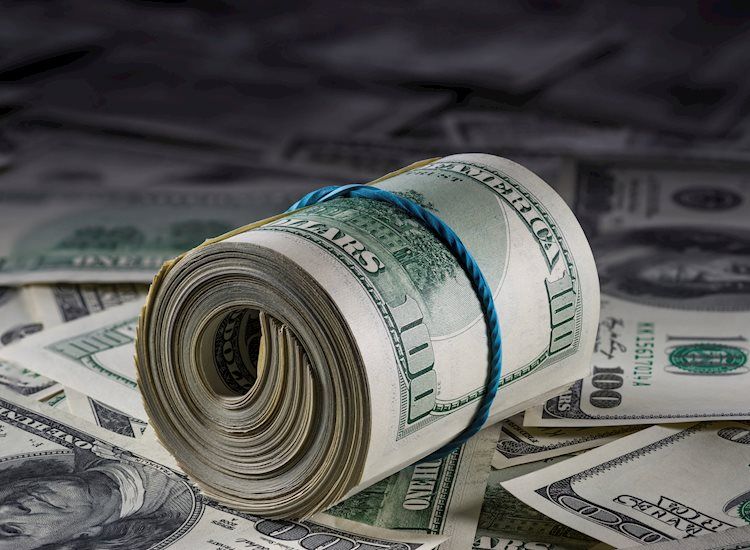Share:
- The DXY jumped towards 101.30 after bottoming near 101.20.
- The only highlight during the session was December’s Chicago PMI, which came in lower than expected.
- US Treasury yields gained some ground but remain near multi-month lows.
- The DXY will post a modest 2% yearly loss, opening the 2023 above 103.00 and closing just above 101.00.
The US Dollar (USD) remains on a subdued tone on the last trading day of 2023. The US Dollar Index (DXY) is positioned at 101.30, shedding daily gains as dovish bets on the Federal Reserve (Fed) weigh heavily on the Greenback. Soft Chicago PMI figures for December also added pressure to the currency on a quiet Friday.
The Federal Reserve’s dovish stance, welcoming cooling inflation figures, ruling out rate hikes in 2024, and forecasting 75 bps of easing recently drove demand out of the US Dollar to riskier assets. As for now, the market is anticipating a rate cut in March with an additional adjustment in May. Next week, the US will release key labor market data, which will help investors place their bets for the next Fed decisions.
Daily digest market movers: US Dollar trades soft as dovish bets and poor December Chicago PMI add pressure
- The Chicago PMI report issued by the Institute for Supply Management of Chicago for December recorded 46.9, falling short of the consensus of 51 and the previous figure of 55.8.
- Next week, the highlights in the US calendar will be December’s Nonfarm Payrolls, Average Hourly Earnings, and the Unemployment Rate.
- Yields on US bonds struggle to advance, holding near multi-month lows. Specifically, the 2-year yield is recorded at 4.25%, while the 5-year and 10-year yields stand at 3.84% and 3.85%, respectively.
- The CME FedWatch Tool indicates a low probability for a rate hike in the January meeting with just 15% odds for a cut. Moreover, market sentiment is leaning towards rate cuts for March and May 2024.
Technical Analysis: DXY index bearish pressure persists despite potential for a minor correction
The indicators on the DXY daily chart reflect a predominantly bearish sentiment. With the index considerably below its 20, 100, and 200-day Simple Moving Averages (SMAs), the bears appear to be in control on the broader scale. This is further emphasized by the Relative Strength Index (RSI) nearing oversold conditions, which aligns with the overall index’s bearish outlook.
The Moving Average Convergence Divergence (MACD) showcases rising red bars, demonstrating a slight surge in selling pressure. This might trigger a conservative buying signal for contrarian investors looking to seize an opportunity in this oversold market condition.
In short, the selling momentum seems to dominate, but due to the oversold RSI and rising MACD red bars, a minor upward momentum can be expected.
Support levels: 100.70, 100.50, 100.30.
Resistance levels: 101.30, 101.50, 101.70.
Fed FAQs
Monetary policy in the US is shaped by the Federal Reserve (Fed). The Fed has two mandates: to achieve price stability and foster full employment. Its primary tool to achieve these goals is by adjusting interest rates.
When prices are rising too quickly and inflation is above the Fed’s 2% target, it raises interest rates, increasing borrowing costs throughout the economy. This results in a stronger US Dollar (USD) as it makes the US a more attractive place for international investors to park their money.
When inflation falls below 2% or the Unemployment Rate is too high, the Fed may lower interest rates to encourage borrowing, which weighs on the Greenback.
The Federal Reserve (Fed) holds eight policy meetings a year, where the Federal Open Market Committee (FOMC) assesses economic conditions and makes monetary policy decisions.
The FOMC is attended by twelve Fed officials – the seven members of the Board of Governors, the president of the Federal Reserve Bank of New York, and four of the remaining eleven regional Reserve Bank presidents, who serve one-year terms on a rotating basis.
In extreme situations, the Federal Reserve may resort to a policy named Quantitative Easing (QE). QE is the process by which the Fed substantially increases the flow of credit in a stuck financial system.
It is a non-standard policy measure used during crises or when inflation is extremely low. It was the Fed’s weapon of choice during the Great Financial Crisis in 2008. It involves the Fed printing more Dollars and using them to buy high grade bonds from financial institutions. QE usually weakens the US Dollar.
Quantitative tightening (QT) is the reverse process of QE, whereby the Federal Reserve stops buying bonds from financial institutions and does not reinvest the principal from the bonds it holds maturing, to purchase new bonds. It is usually positive for the value of the US Dollar.
Read the full article here
